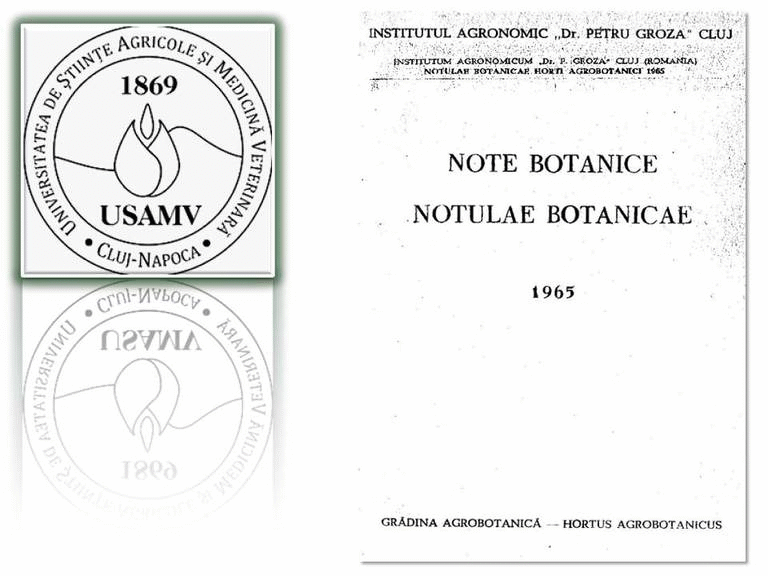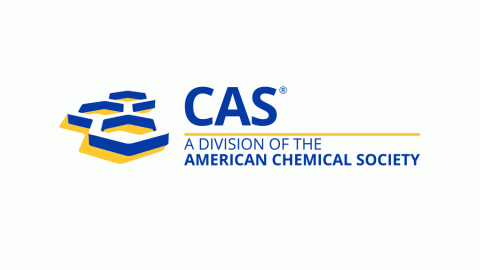Cotton Response to Planting Patterns under Effect of Typical and Limited Irrigation Regime
DOI:
https://doi.org/10.15835/nbha47411712Keywords:
cotton; harvest index; irrigation regime; planting patternAbstract
Decrease of width between cotton (Gossypium hirsutum L.) row spacing has been suggested as an agronomic practice that may increase the yield and reduce the cost production. Altering agronomic practices as row spacing system as well as irrigation regime can affect cotton growth parameters, yield components, and physical fiber properties. The object of this study is the assessment of interaction between row spacing cropping systems and irrigation regime and their effects on yield components. Yield, biomass, harvest index, seed index, seed weight, bolls number, individual boll weight, the proportion of lint and seed were studied in three row spacing systems [conventional row (CR), narrow row (NR) and ultra-narrow row (UNR)] under typical and limited irrigation regime, during two growing seasons. The decrease of row spacing had different effect on yield components under the typical and limited irrigation regime e.g. the differences between systems of row spacing on bolls number were more evident under the limited irrigation than the typical one, and the opposite was true for the lint proportion. Decreased row spacing had positive effects on yield, biomass, bolls number per land area and lint proportion in two irrigation systems. However, had negative impact on individual boll weight, seed weight, seed index, harvest index and seed proportion. Interaction of row spacing and irrigation regime was significant for seed index. High differences were more significant between UNR and CR and less between NR and CR. UNR system appeared to be viable alternative to traditional row system for cotton production.
References
Bednarz CW, Shurley WD, Anthony WS, Nichols RL (2005). Yield, quality, and profitably of cotton produced at varying row plant densities. Agronomy Journal 97(1):235-240.
Campbell BT, Bauer PJ (2007). Genetic variation for yield and fiber quality response to supplemental irrigation within the Pee Dee upland cotton germplasm collection. Crop Science 47(2):591-599.
Coker DL, Oosterhuis DM, Brown RS (2009). Cotton yield response to soil-and foliar-applied potassium as influenced by irrigation. Journal of Cotton Science 13(1):1-10.
Darawsheh MK (2010). Cotton fiber quality parameters response to cultivation system as influenced by limited and normal irrigation. Journal of Food, Agriculture and Environment 8(2):527-530.
Darawsheh MK, Aivalakis G, Bouranis DL (2007). Effect of cultivation system on cotton development, seed-cotton production and lint quality. The Journal of Plant Science and Biotechnology 1(2):206-213.
Darawsheh MK, Chachalis D, Aivalakis G, Khah E (2009a). Cotton row spacing system and plant density cropping system II. Effects on seed-cotton yield, boll component and lint quality. Journal of Food, Agriculture and Environment 7 (3-4):262-265.
Darawsheh MK, Khah EM, Aivalakis G, Chachalis D, Sallaku F (2009b). Cotton row spacing and plant density cropping systems I: Effects on accumulation and partitioning of dry mass and LAI. Journal of Food, Agriculture and Environment 7(3-4):258-261.
Enciso-Medina J, Unruh B, Henggeler J, Multer W (2002). Effect of row pattern and spacing on water use efficiency for subsurface drip irrigated cotton. Transactions of ASAE 45(5):1397-1404.
Gerik TJ, Faver K, Thaxton PM, El-Zik KM (1996). Late season water stress in cotton: plant growth, water use, and yield. Crop Science 36(4):914-921.
Gerik TJ, Lemon RG, Faver K, Hoelewyn TA, Jungman MJ (1998). Performance of ultra narrow row cotton in central Texas. In: Proceedings of the Beltwide Cotton Conference, San Diego, CA. National Cotton Council Am., Memphis, TN, 5-9 January 1998 pp 1406-1407.
Hearn AB (1994). The principal of cotton water relation and their application. In: Constable GA, Forrester NW (Eds). Proceedings of the World Cotton Research Conference 1994. Melbourne: CSIRO pp 66-90.
Heitholt JJ, Pettigrew WT., Meredith WR Jr. (1992). Light interception and lint yield of narrow-row cotton. Crop Science 32(3):728-733.
Howell TA, Davis KR, McCormick RL, Yamada H, Walhood VT, Meek DW (1984). Water use of narrow row cotton. Irrigation Science 5(3):195-214.
Jost PH, Cothren JT (2000). Growth and yield comparisons of cotton planted in conventional and ultra-narrow row spacing. Crop Science 40(2):430-435.
Jost PH, Cothren TJ (2001). Phenotypic alterations and crop maturity differences in ultra-narrow row and conventionally spaced cotton. Crop Science 41(4):1150-1159.
Karademir C, Karademir E, Ekinci R, Berekatoglu K (2011). Yield and fiber quality properties of cotton (Gossypium hirsutum L.) under water stress and non-stress conditions. African Journal of Biotechnology 10(59):12575-12583.
Kerby TA, Gassman KG, Kelley M (1990). Genotypes and plant density for narrow row cotton systems. I. Height, nodes, earliness and location of yield. Crop Science 30(3):644-649.
Lascano RJ, Krieg DR, Baker JT, Goebel TS, Gitz III DC (2015). Planting cotton in a crop residue in semiarid climate: Water balance and lint yield. Open Journal of Soil Science 5(10):236-249.
Lascano RJ, Nelson JR (2014). Circular planting to enhance rainfall capture in dryland cropping systems at a landscape scale: measurement and simulation. In: Ahuja LR, Ma L, Lascano RJ (Eds). Practical applications of agricultural system models to optimize the use of limited water, advance in agricultural system modeling. ASA, CSSA, SSSA, Madison, Vol. 5, pp 85-111.
Mert M (2005). Irrigation of cotton cultivars improves seed cotton yield, yield components and fiber properties in the Haty region, Turkey. Acta Scandinavica Section B - Soil and Plant 55(1):44-50.
Nichols SP, Snipes CE, Jones MA (2004). Cotton growth, lint yield, and fiber quality as affected by row spacing and cultivar. Journal of Cotton Science 8:1-12.
Onder M, Akiscan Y, Onder S, Mert M (2009). Effect of different irrigation regime water level on cotton yield and yield components. African Journal of Biotechnology 8(8):1536-1544.
Oosterhuis DM (1994). Arkansas Experiment Station Special Report 166, University of Arkansas, Department of Agronomy, Proceeding of the 1994 Cotton Research Meeting pp 31-40.
Park W, Scheffler BE, Bauer PJ, Campbell BT (2012). Genome-wide identification of differentially expressed genes under water deficit stress in upland cotton (Gossypium hirsutum L.). BMC Plant Biology 12(1):90.
Pettigrew WT (2004). Moisture deficit effects on cotton lint yield, yield components and boll distribution. Agronomy Journal 96(2):377-382.
Reddy KN, Burke IC, Boykin JC, Willford RJ (2009). Narrow-row cotton production under irrigated and non-irrigated environment: plant population and lint yield. Journal of Cotton Science 13:48-55.
Snipes CE (1996). Weed control in ultra-narrow row cotton-possible strategy assuming a worst case scenario. In: Dugger P, Richter D (Eds). Proceedings Beltwide Cotton Conference Nashville, TN. National Cotton Council, Memphis pp 66-67.
Stephenson DO, Barber LT, Bourland FM (2011). Effect of twin-row spacing pattern and plant density on cotton growth, yield and fiber quality. Journal of Cotton Science 15:243-250.
Valco TD, Stanley WS, McAlister DD (2001). Ultra-narrow row cotton ginning and textile performance results. In: Proceedings Beltwide Cotton Conference Anaheim (USA), CA. National Cotton Council, Am. Memphis pp 355-357.
Warwick SN, Read JJ, Constable GA, Reid PE (2005). Selection for water use efficiency traits in a cotton breeding program. Crop Science 45(3):1107-1113.
Yagmur E, Gurel A, Oren Y, Izci B, Edreva A, Hakerlerler H, … Yildiz-Aktas L (2014). Effects of different drought applications and potassium doses on cotton yield and fiber quality. Research Journal of Agricultural and Environmental Management 3(1):60-67.
Downloads
Published
How to Cite
Issue
Section
License
Copyright (c) 2019 Mohammed K. DARAWSHEH, Ioanna KAKABOUKI, Ioannis ROUSSIS, Dimitrios J. BILALIS

This work is licensed under a Creative Commons Attribution 4.0 International License.
License:

Open Access Journal:
The journal allows the author(s) to retain publishing rights without restriction. Users are allowed to read, download, copy, distribute, print, search, or link to the full texts of the articles, or use them for any other lawful purpose, without asking prior permission from the publisher or the author.











.png)







